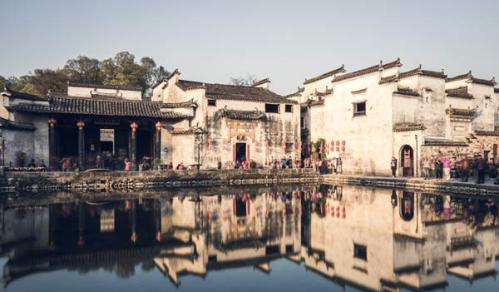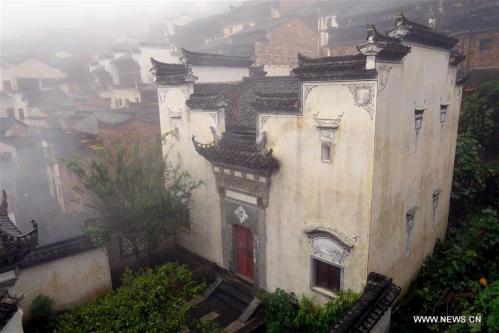徽州建筑源于安徽和江西省,徽州建筑的特色是建筑物以白墙以及灰色或黑色屋顶为主,被认为是古代徽州文化的“活化石”。
Hui-style architecture, found in Anhui and Jiangxi provinces, is characterised by buildings with white walls and grey or black roofs. It’s considered to be a "living fossil" of ancient Huizhou culture. But the task of protecting these buildings is getting more and more urgent. With a new regulation allowing citizens to become custodians of ancient architecture, more people are joining in preserving this ancient cultural heritage.
At the foot of Huangshan Mountain in east China’s Anhui Province sprawl clusters of grey-tiled, white-washed houses: the typical scene from any traditional Chinese landscape painting. This Hui-style architecture is one of the major Chinese architectural styles, dating back to the Song Dynasty.
Huangshan is home to numerous such ancient buildings, but they are gradually disappearing.
According to the third national survey on cultural relics, over 40,000 supposedly "immovable" relics have disappeared in the past 30 years, with more than half that number destroyed by new construction.

At the foot of Huangshan Mountain in east China’s Anhui Province sprawl clusters of grey-tiled, white-washed houses: the typical scene from any traditional Chinese landscape painting.
"The costs for protecting and preserving these ancient buildings are huge. For example, it would cost over 100 million yuan to maintain an ancient Hui-style house with an area of 200 square meters. The goverment alone can only preserve those which require the most urgent care. And people are just reluctant to restore or preserve the ancient buildings," engineer Hu Rongsun said.
But the situation is changing. In October 2014, local authorities passed a regulation that allows citizens to become custodians of ancient architecture.
The regulation recognizes the claiming of historic buildings by both individuals and organizations with sufficient assets to help with their maintenance and protection.
These custodians would be allowed to develop the buildings within strict conditions, while the ownership would not be changed.
With this new regulation, more and more people are joining in preserving the ancient architectures, restoring them and turning them into art galleries or coffee houses.

Photo taken on Nov. 13, 2016 shows the Hui-style architecture in Wuyuan County, east China's Jiangxi Province. (Xinhua/Li Mingfang)
"The property rights dictate that the buildings belong to the public, but whoever uses them will protect them. It’s a great way to preserve the ancient buildings. They are incorporated into people’s lives and have gained a new life. Protection does not necessary mean lock them up and keep them away from people," said Yu Huai, Hui-style house owner.
The local authorities are now working on simplifying the procedure of claiming the ancient houses, and are also calling on more people to join in the cause of preserving these buildings for many generations to come.